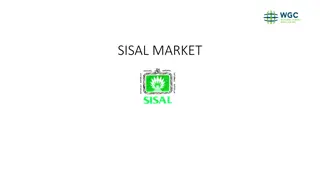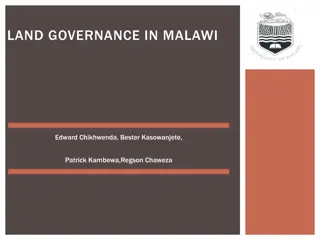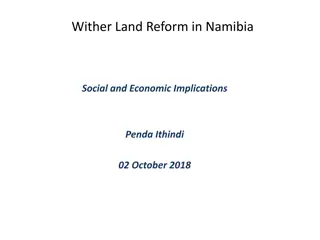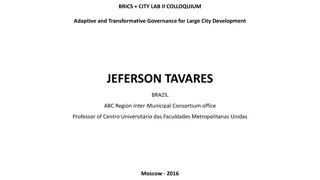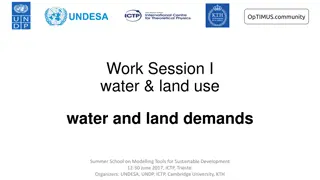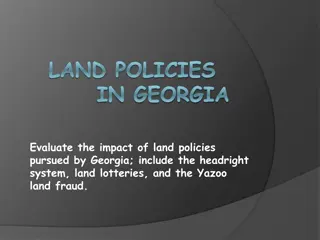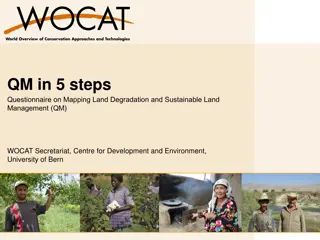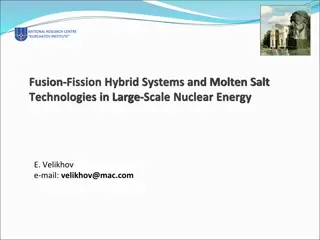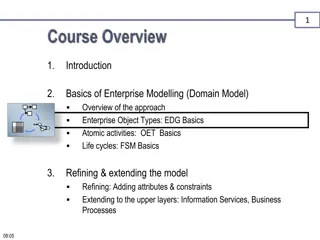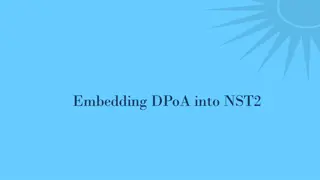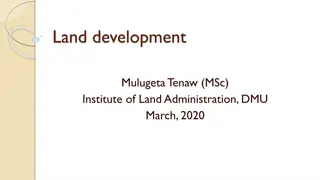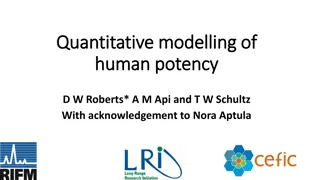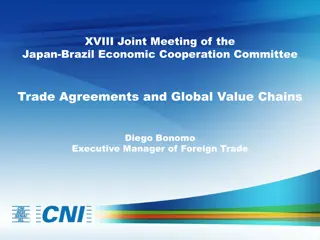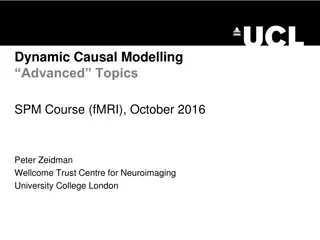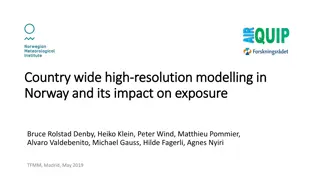Modelling Land Use Change in Brazil 2000-2050
In this study, the trajectory of Brazilian emissions, the dilemma between deep-sea oil and renewables, and the impact of biofuels on land change are examined. The research explores the likely future scenarios and projects both direct and indirect land changes due to biofuels. The GLOBIOM model is utilized to analyze the agriculture, forestry, and bioenergy sectors in relation to population growth and economic factors.
Download Presentation

Please find below an Image/Link to download the presentation.
The content on the website is provided AS IS for your information and personal use only. It may not be sold, licensed, or shared on other websites without obtaining consent from the author.If you encounter any issues during the download, it is possible that the publisher has removed the file from their server.
You are allowed to download the files provided on this website for personal or commercial use, subject to the condition that they are used lawfully. All files are the property of their respective owners.
The content on the website is provided AS IS for your information and personal use only. It may not be sold, licensed, or shared on other websites without obtaining consent from the author.
E N D
Presentation Transcript
Modelling Land Use Change in Brazil : 2000-2050 S o Paulo, 06.07.2015 Gilberto C mara FAPESP Programme on Global Change Research National Institute for Space Research, INPE 20/04/2025 1
REDD-PAC project team (www.redd-pac.org) Alexandre Ywata (IPEA) Aline Soterroni (INPE) Fernando Ramos (INPE) Gilberto C mara (INPE) Pedro Andrade (INPE) Ricardo Cartaxo (INPE) Aline Mosnier (IIASA) Florian Kraxner (IIASA) Johannes Pirker (IIASA) Michael Obersteiner (IIASA) Rebecca Mant (WCMC) Valerie Kapos (WCMC)
REDD+ Policy Assessment Center www.red-pac.org.br Partner Institutions: Duration: November 2011 March 2016
What are the likely trajectories on Brazilian emissions? 2500 76 2000 296 327 Residues 1500 95 Industry 105 366 1000 Energy 505 1460 ? 406 Agriculture 500 445 LUC 599 0 360 2000 2010 2020 2030 Redu o de 75% em florestas, crescimento em energia e agricultura
Brazil: Projected direct land change from biofuels (2020) source: Lapola et al (PNAS, 2010)
Brazil: Projected indirect land change from biofuels (2020) source: Lapola et al (PNAS, 2010) source: Lapola et al (PNAS, 2010)
GLOBIOM: Global Biosphere Management Model Partial equilibrium model: Agriculture, Forestry and Bioenergy sectors Population & Economic Growth & Exogenous Demand Shocks REGION Commodity Prices and Quantities DEMAND MARKETS Crops Livestock Wood Land Use SPATIAL RESOLUTION SUPPLY Forest Cropland Pasture Other Environmental effects LAND source: IIASA
Base maps for GLOBIOM-Brazil Forest 2000 Livestock 2000
Validation: deforestation in Amazonia 2000- 2010 PRODES (16.5 Mha) GLOBIOM (16.9 Mha)
Environmental Debts and Surpluses (2010) Debts Surpluses
Crop production grows, grassland decreases 120 100 80 60 40 20 0 2000 2010 2020 2030 2040 2050 Croplands (Mha) Cattle and pasture (heads and Mha) Projections of GLOBIOM-Brasil model
Brazils new Forest Code: zero net emissions from deforestation after 2030 Projections of GLOBIOM-Brasil model (BAU = business as usual , FC = Forest Code)
Energy policy is crucial for our future emissions 2500 2000 327 Residues 296 1500 Industry 406 Agriculture 1000 446 480 1460 366 Energy 500 505 LUC 599 650 0 360 140 2000 2010 2020 2030 22
Innovation + policies = low carbon economy 30% 25% 20% Conservative 15% Innovative 10% 5% 0% 2010 2020 2030 With the right carbon tax, biofuels can be 30% of energy matrix
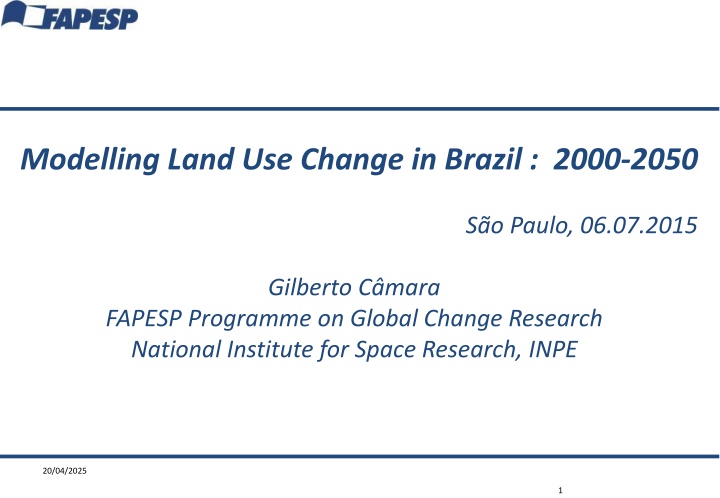

![Halal_Chicken_from_Brazil-_Ensuring_Quality_and_Authenticity[1]](/thumb/86918/halal-chicken-from-brazil-ensuring-quality-and-authenticity-1.jpg)

